See All FAQ
FAQ
Learn answers to common chiropractic questions.
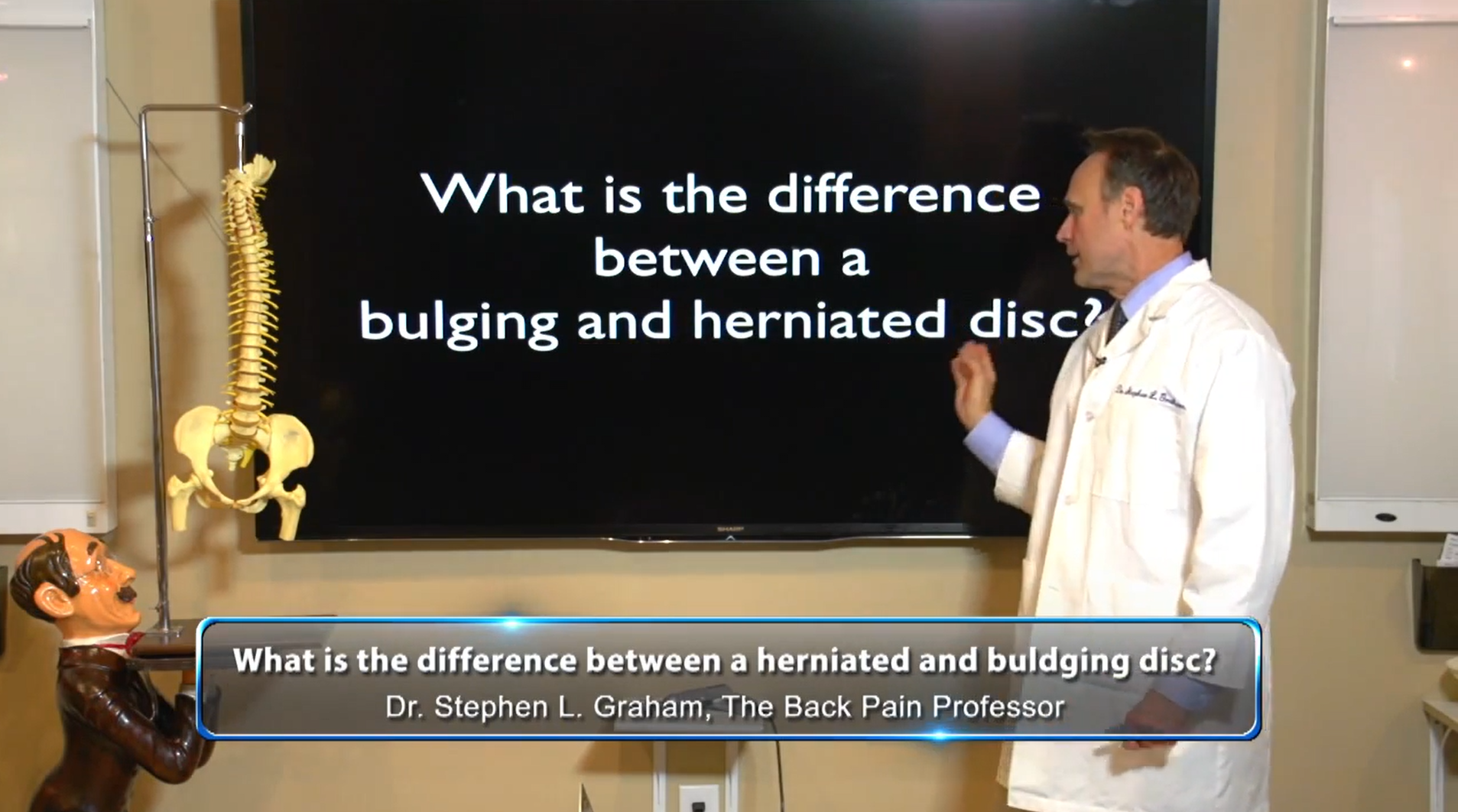
By Dr. Stephen Graham
•
18 Oct, 2022
On this video Dr. Stephen Graham discusses the difference between a bulging and herniated disc. Dr. Graham reports that the disc is the material that sits in between the spinal vertebrae to give the spine both bending and shock absorbing qualities. The disc is made up of a hard cover and a jelly material in the inside. Dr. Graham says to get a mental picture of this to think of a jelly donut. As long as this jelly like material stays in the middle of the disc the chances of having a healthy disc for along time is very good. Dr. Graham reports that when spinal bones become mis-aligned or jammed up the nutrition to the disc may slow down causing the outer disc material to dry up and crack. When this occurs the jelly like material, because it is under so much pressure, will start to find its way through the cracks. The difference between a bulging and herniated disc, Dr. Graham states, depends if the jelly material stays inside (Bulging or contained ) or outside the disc(Herniated or uncontained or the jelly came outside of the donut). Bulging discs are the precursor to a herniated disc, in other words, most people don’t go from normal to herniated all at one time. Bulging discs are confirmed with an MRI and usually measured in millimeters. A small bulge may be considered 1-3 millimeters, whereas anything over 4 millimeters is considered moderate. A bulge of 7 millimeters +, is considered severe. When the jelly starts displacing backwards, it causes the outer covering to bulge out and it may put pressure on the nerve roots at that level. If the bulge is at L4-L5 or L5-S1, it may cause pressure on the sciatic nerve. When this occurs the patient may experience pain not only in their back, but also down their leg. Herniated discs are when the jelly has broken through the covering and often times these require surgery. Dr. Graham says that his office deals mostly with bulging discs. He reports that typical symptoms of a bulging disc include: back pain, gluteal pain, leg pain, foot pain, numbness, tingling, weakness. Dr. Graham points out that typically sitting will cause more pain than standing. Sneezing and coughing also may cause a sharp increase in pain when there is a bulging or herniated disc. These type of patients, according to Dr. Graham, may tell him that they get more comfort when they bend their knees lying down. Lastly, Dr. Graham talks about treatment. He says that many times if the jelly has come outside the disc, or herniated, that they may go to surgery depending on how severe the symptoms are. Whereas, bulging discs may not. Dr. Graham treats these types of problems with his computerized adjusting instrument. This high tech instrument decompresses the spinal bones to create a negative pressure to help take pressure off the nerve that is causing the back and leg pain, usually the sciatic nerve.

By Dr. Stephen Graham
•
18 Jan, 2014
In this video Dr. Stephen Graham discusses the dangers of taking the over the counter drug, Tylenol. Tylenol is advertised to reduce pain, fevers and relieve symptoms of allergies, colds, coughs, and flu. Dr. Graham states that the main ingredient in Tylenol is acetaminophen. Acetaminophen works by elevating the pain threshold. So what was painful to someone before at a level 10 may only feel like a level 5, for example. The side effects for Tylenol are wide. Here are a few of the many side effects:bloody stools, bloody or cloudy urine, red spots on the skin, sore throat, sores or ulcers on the lips or mouth, sudden decrease in the amount of urine, tiredness or weakness, yellow eyes or skin, increased sweating, loss of appetite, vomiting, stomach cramps, diarrhea. Interestingly, for the people who are taking Tylenol for back pain, one of the side effects is back pain. One of the biggest dangers in Tylenol is the margin between the amount that helps and the amount that can cause serious harm is smaller than for other pain relievers. In one research study it showed that taking 8 extra strength Tylenols daily for 2 weeks caused liver damage. In fact, the number 1 cause of acute liver failure in the United States is Tylenol type products. Many people double or triple-up, taking multiple OTC medications, all of which may contain acetaminophen. This is where an overdose can easily occur. The potential for acetaminophen to harm the liver is increased when it is combined with alcohol. There are many documented cases every year of liver damage leading to death from Tylenol mixed with Alcohol. Some natural type pain relievers include ginger, Krill oil, Bromelain, and Cayenne cream. These all have natural pain relievers contained in their make up. Finally, Dr. Graham discusses his method through computerized adjustments that can take pressure off the nerve to relieve the pain. Graham reports that removing the cause is the more prudent way of taking care of the problem versus taking a quick pill to cover up the symptoms and potentially damaging the liver.

By Dr. Stephen Graham
•
15 Jan, 2014
Dr. Stephen Graham, a chiropractor and owner of Graham Chiropractic located in eastern Louisville, KY, paints a picture of the condition called spondylolistheisis. Spondylolisthesis, Dr. Graham states, means slippage. This usually is found in the lumbar spine when one of the lumbar vertebrae slips forward in respect to the one above or below and sometimes both. He goes on to explain that when this slippage occurs it drags the neural elements with it, namely the spinal nerves. When this happens, it puts increased tension on the nerves that may cause a sequela of symptoms. Dr. Graham, illustrates how there are mainly three causes for the spinal bone to move forward in respect to the adjacent spinal bones. And while this mostly occurs in the lumbar spine, it certainly can also happen both in thoracic and cervical spines, just not as frequently. The first cause is pathological slippage or pathological spondylolisthesis, which means the slippage has occurred because a pathology (disease process) caused the rear portion of the bone to fracture or break, resulting in the bone to slide forward. Most often this is in response to a destructive form of bone cancer. Dr. Graham reports that in his practice he has never had anyone in 23 years come in with a pathological spondylolisthesis. Another type of spondylolisthesis is the class that results from degeneration of the spine. A small percentage of the time degenerative spondylolisthesis arises because the supporting ligaments are lax because the disc has worn down so the bone starts moving forward. This is more frequent that pathological. The last form is from a fracture of the back of the bone. Dr. Graham shares that this usually stems from a very hard fall such as a fall from a horse, off a roof, or maybe a very hard slip on ice. This kind of trauma causes the rear portion of the spinal bone to break and the bone literally separates from the front of the bone and gravity just pulls the front portion forward. Dr. Graham, illustrates that there are four different grades of spondylolisthesis (Grade 1-4). A grade I spondylolisthesis is when the bone slips forward between 1 and 25 %. This is the most common seen according to Dr. Graham, roughly 80-90% of the spondylolisthesis cases he has treated The next category is a grade II. This occurs when the bone slips forward 26-50%. Dr. Graham points out that these are not nearly as common as Grade I’s, but are the next most common seen. The third category is a Grade III. This is when the bone slips forward between 51-75%. Dr. Graham says these are pretty rare cases. Maybe one or two a year in a fairly busy practice. The final category is a GradeIV. Dr. Graham states that this is when the bone is hanging on for dear life (76-99% forward). He reports he has only seen a handful in his entire 23 years of practice. All these types of spondylolisthesis cause the surrounding nerve at that level to be pulled and tugged on, resulting in a variety of symptoms. The usual suspects are: back pain, gluteal pain, leg pain , leg numbness and tingling, and sciatic pain or sciatic type symptoms. Dr. Graham shares that treatment for these condition respond well to his computerized adjustments. In addition, he goes on to say that he consults with his patients on exercises they need to do to to strengthen the core and to keep weight off the stomach area. A weak core and a pot belly may cause the vertebrae to slip further forward. This often times can also lead to degenerative processes. Dr. Graham shares that research points to about 6% of the population have this condition. This condition he points out are more difficult cases than if the bone had not slipped forward at all.
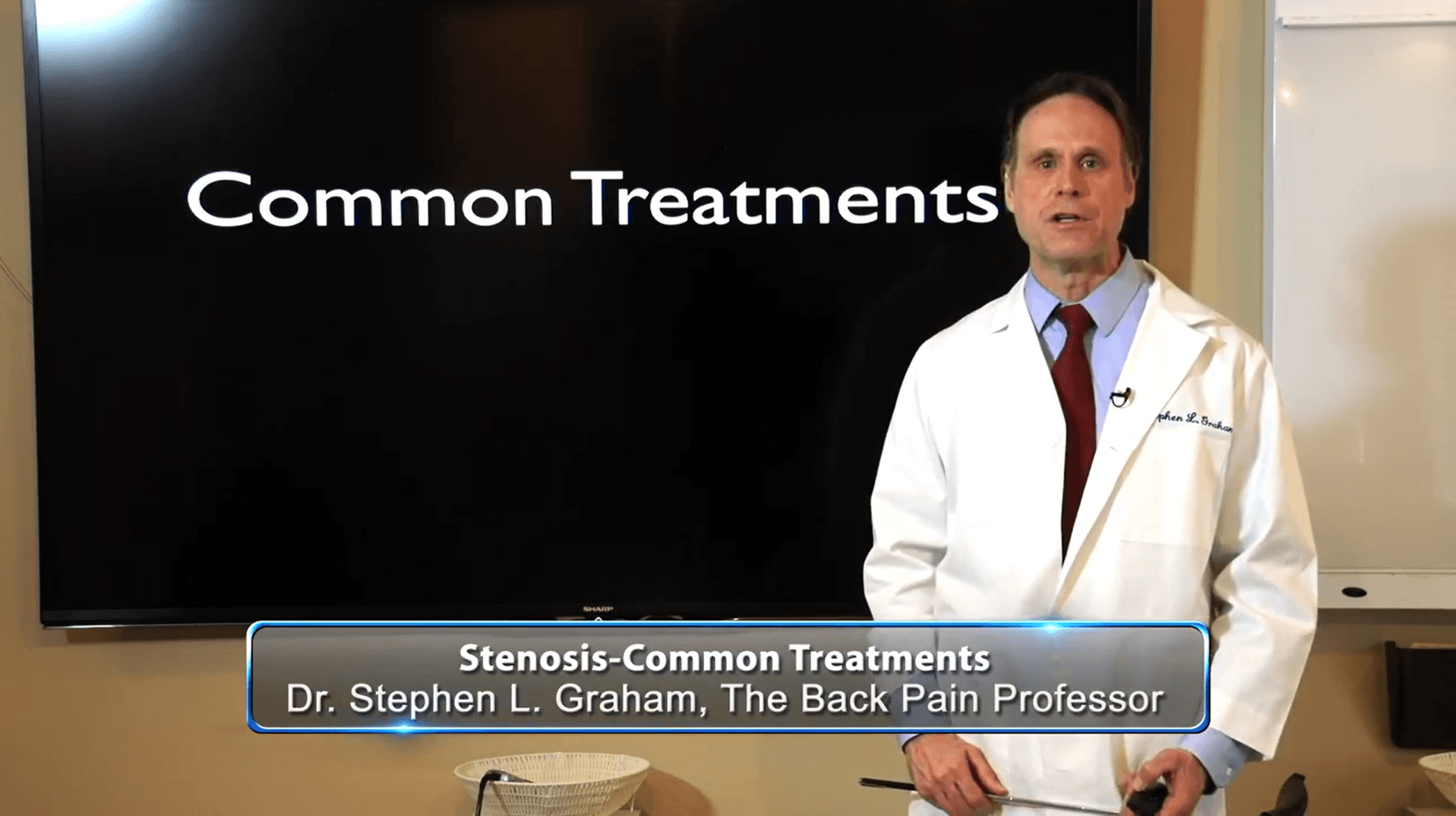
By Dr. Stephen Graham
•
15 Jan, 2014
In this video Dr. Graham, a chiropractor discusses different treatment methods for spinal stenosis. The most common way Dr. Graham states that people treat their stenotic pain is by way of non steroidal anti-inflammatories, more commonly known as NSAIDS. This will include Ibuprofen, Aleve, Advil and Motrin. The problem with type of treatment is many people take more than they should and it can lead to abrasions in the stomach lining. Another method people commonly use is prescription medications. These may range from prescription anti-inflammatories to prescription pain pills. Some of these are very addicting and one needs to be very careful when considering these. Moreover, the average prescription medication carries 70 side effects. Steroid injections are popular with spinal stenosis. These two carry side effects, one of which it makes the bones soften and weakens the tendons and ligaments. This is why there is a limit of three per year. Finally, surgery is being recommended on a daily basis with stenosis patients. This is a major surgery because it is a de-compressive one and most of the time it is with the more elderly patient so there is higher risk of infection. Dr. Graham uses a computerized adjusting instrument to treat his patients that have spinal stenosis. This is a de-compressive type adjustment and he has a lot of success with this treatment method. In addition, it does not carry the risk that drugs and surgeries carry. Dr. graham reports that a high percentage of his patients are relieved of his pain with these specialized adjustments.
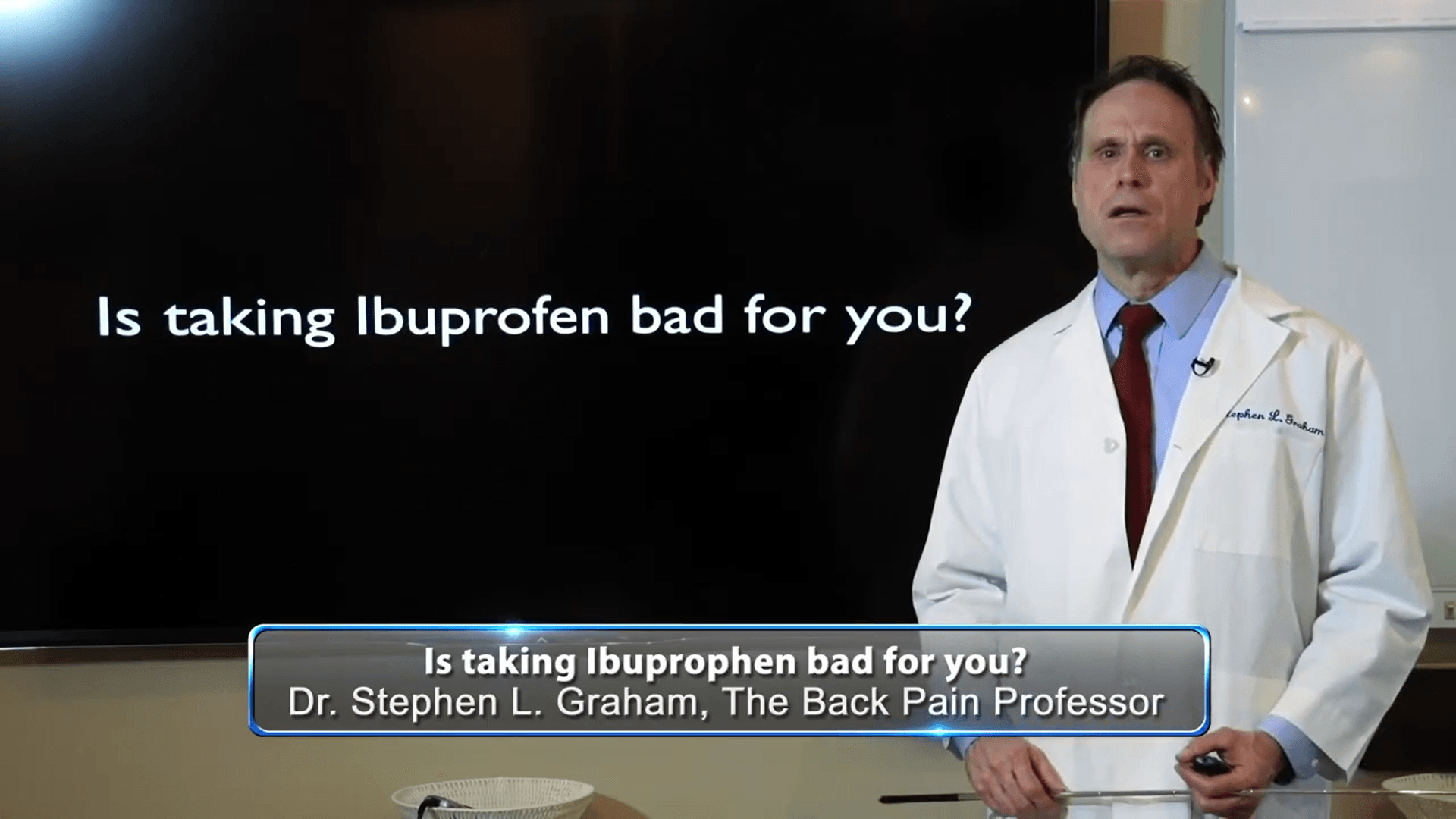
By Dr. Stephen Graham
•
14 Jan, 2014
On this video Dr. Stephen Graham an east end Louisville Chiropractor explores the dangers of taking the over the counter drug, Ibuprofen. Dr. Graham reports that Ibuprofen includes such OTC’s as Advil and Motrin. Aleve is listed as Naproxen. However, all these are listed under the heading of NSAID’s (non steroidal ant-inflammatories). The way NSAID’s work is they interfere with specific enzymes that trigger inflammation. This will in effect slow inflammation down, thereby decreasing the pain. Most people that have mechanical problems to their spine such as disc degeneration, bulging discs, and stenosis will have inflammation. This inflammation will actually put pressure on the nerve and cause pain. Ibuprofen and the other NSAIDs as mentioned earlier, will interfere with inflammation producing enzymes. Although in many cases it will lessen back pain there are some real side effects from taking Ibuprofen that are quite disturbing. Some of these common side effects from taking Ibuprofen are as follows: Most common Abdominal pain Acid or sour stomach Belching Bloating Cloudy urine Decrease in amount of urine Decrease in urine output or decrease in urine-concentrating ability Diarrhea Difficulty having a bowel movement (stool) Excess air or gas in stomach or intestines Full feeling Heartburn Indigestion Itching skin Pain or discomfort in chest, upper stomach, or throat Pale skin Passing gas Nausea Noisy, rattling breathing Rash with flat lesions or small raised lesions on the skin Shortness of breath Swelling of face, fingers, hands, feet, lower legs, or ankles Troubled breathing at rest Troubled breathing with exertion Unusual bleeding or bruising Unusual tiredness or weakness Vomiting Weight gain Less common Abdominal cramps Stomach soreness or discomfort More rare side effects are: Agitation Back, leg, or stomach pains Bleeding gums Blistering, peeling, loosening of skin Blood in urine or stools Bloody, black, or tarry stools Blurred vision Burning feeling in chest or stomach Change in vision Chest pain Chills Clay-colored stools Coma Confusion Constipation Cough or hoarseness Dark urine Decreased urine output The main concern though should be the harmful effects to the stomach lining. ‘Everyone who takes NSAIDs will get small erosions of the stomach, which can happen after a single dose,’ says Dr Ray Shidrawi, a consultant gastroenterologist at Homerton University Hospital in London. Other side effects that should be a concern for men are erectile dysfunction. Renal cell cancer is also an effect from taking too much Ibuprofen. Natural type remedies are white willow bark, omega 3 from such sources as salmon and of course ice is a great topical to remove inflammation. One danger in anti-inflammatories is that it lessens the pain and people tend to do more thus possibly damaging the area even more. Dr. Graham suggests the best thing to do is to remove the cause. Most of the time Dr. Graham states that back pain is caused from misalignments to the spine, disc degeneration, bulging discs and stenosis all of which responds well to de-compressive adjustments that Dr. Graham performs in his office.
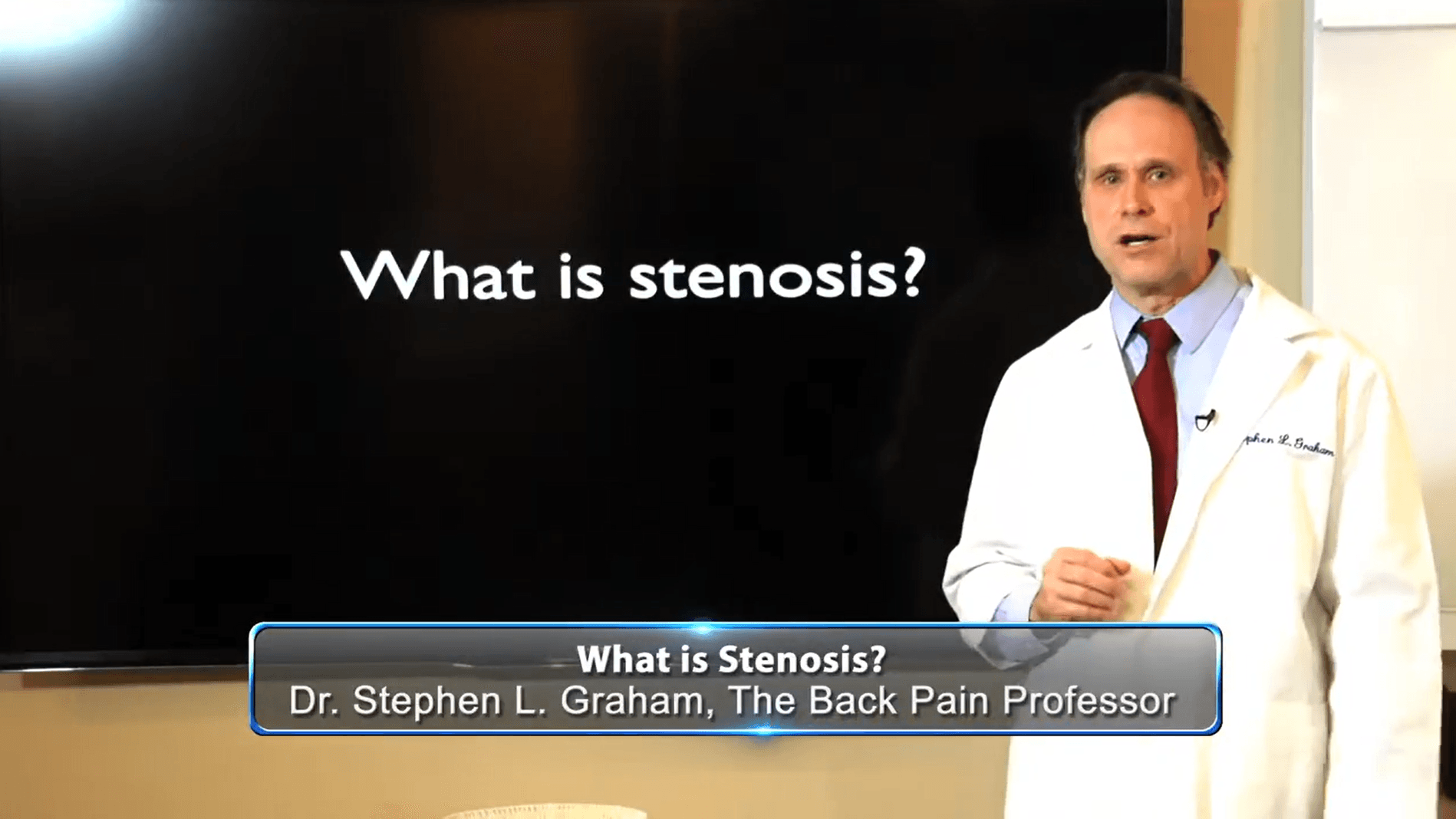
By Dr. Stephen Graham
•
14 Jan, 2014
In this video Dr. Graham, an east end Louisville Chiropractor explains the term Stenosis. Dr. Graham states that stenosis is derived from the greek word which means narrow. Spinal stenosis means that the spinal canal which contains the spinal cord is too narrow for the cord and puts pressure on it. Dr. Graham illustrates the common causes of spinal stenosis below. #1. Bone spurs may cause the canal to narrow because the spur is taking residence in the canal. Bone spurs are the result of abnormal stress on a bone. Often times they are found on the heal of the feet, but more often they are found on vertabrae of the spine. Bones spurs form in response to abnormal forces usually caused from misalignments to the spine. Misalignments may occur form such events as car accidents, slips and falls, just to name a few. When the spine misaligns or jams up the center of gravity can change and this puts that portion of the spine under undue stress. In response to this the body lays down more bone in that area. Unfortunately, that additional growth on the spinal bone many times is in the back of the bone just in front of the canal. So when the bone spur forms, often times it grows right into the canal where the nerve roots are. Facet joints that have enlarged will take space up in the canal. Facet joints are formed from the back portion of the spinal bones. Facet joints allow the spine to better be able to bend and twist without damaging our spine. However, when there is stress on the spinal bones these facet joints can grow in response to the stress. And just like the vertabra, they can grow into the canal and cause havic to the nerve roots. #2. Disc degeneration can cause the diameter of the canal to narrow. The disc rests in between 23 of the 24 spinal bones. One of the many functions they serve is a spacer so that the spinal nerve root has an adequate amount of space to pass through. If the disc is traumatized or the spinal bones are misaligned causing the spine to compress and jam the spinal joints, the disc will not always get the proper nutrition as blood flow may be compromised. This lack of nutrition most often leads to degenerative changes which causes the disc to thin. This thinning is what makes the diameter of the canal to reduce in size. It is not surprising that many people that are elderly have spinal stenosis. This is usually because most elderly people have degenerated discs in their spines, and of course bone spurs which is talked about in the previous segment. #3. The ligaments that attach the spinal bones together hypertrophy (enlarge) which can change the diameter of the canal. When the disc degenerates the ligament (ligamentum flavum) often times will buckle causing it to push into the canal. This will cause stenosis as well. Often times on the MRI report this ligament is one of the culprits. #4. Finally, spondylolisthesis (a slippage of a spinal bone) can make the diameter change and cause stress on the spinal nerve roots. This is an uncommon finding, but more common in the elderly population. This is because the ligaments and supporting soft tissue has stretched allowing the bone to slide forward. When this occurs it clogs up the canal. #5. Genetic. Some people are born with smaller canals. I don’t see this very often, but it can cause the very same problems that the other four causes mentioned above do. Again, this is a very small percentage of the population.
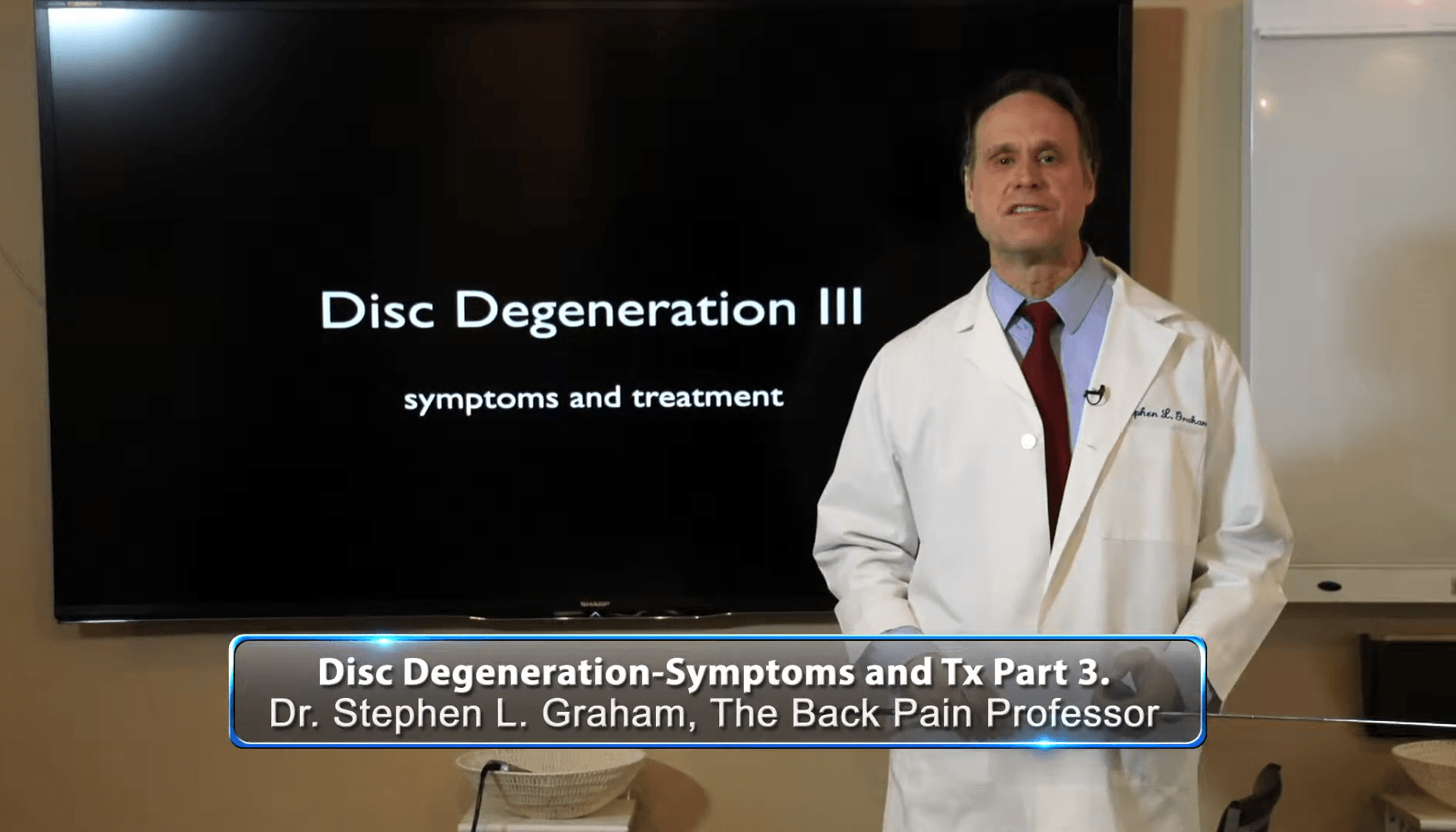
By Dr. Stephen Graham
•
14 Jan, 2014
In this video Dr. Graham describes common symptoms and treatment that arise from disc degeneration. Common symptoms from lumbar spine degeneration include low back pain, leg pain, numbness and tingling in the leg. It can present as either sharp or dull and achy pain. Neck degeneration may present as neck pain, should pain, arm pain, and numbness and tingling down the arm. Common treatments Dr. Graham has seen are non steroidal anti-infammatories otherwise known as NSAIDS. This includes Advil, Aleve, Ibuprofen, Motrin. Dr. Graham states that many patients he has treated were taking more NSAIDS than they should have. This is hard on the intestines and Dr. Graham directs his readers to look at his Ibuprofen video to see the implications from taking these OTC drugs. Other people turn to prescription medications for relief. Again, Dr. Graham points out the fact that the side effects are usually worse than the problem the person is taking the drugs for. Dr. Graham reports that when these aren’t helping they many times are referred for steroid injections. These are also have side effects and the doctors performing this procedure generally can give up to three a year because of the bad effects. Finally, surgery may be recommended. Dr. Graham explains that back surgery as a rule does not have the best outcomes as a whole. In Dr. Graham’s office he uses computerized adjusting technology. This instrument is more precise, painless and is safe. Dr. Graham reports that this instrument decompresses the spine restoring normal movement. This movement establishes reduced muscle spasm, reduces inflammation and decreases nerve pressure. Dr. graham says that he has had very good success in his office with disc degeneration.
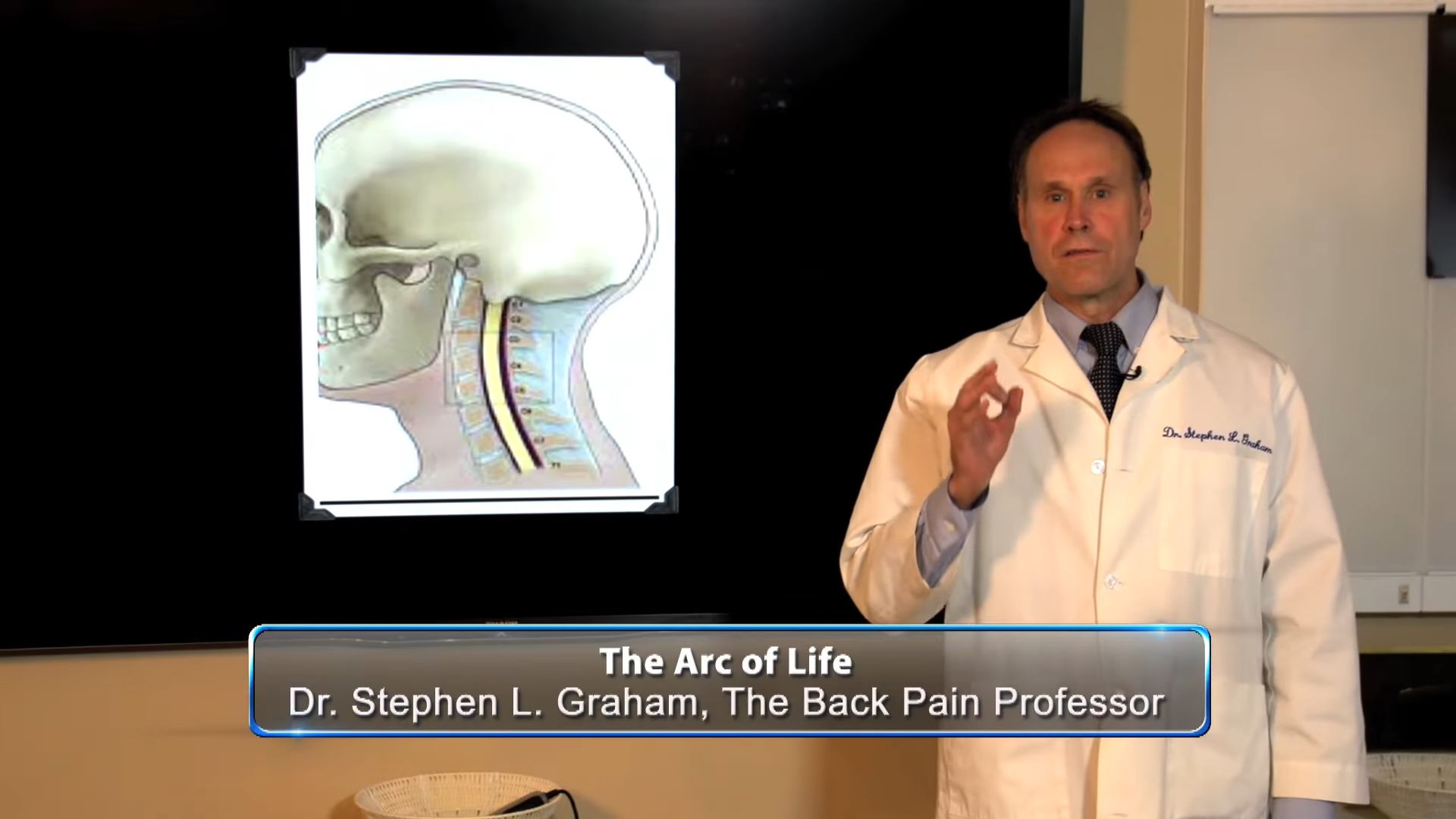
By Dr. Stephen Graham
•
14 Jan, 2014
In this video Dr. Stephen Graham, a Louisville Chiropractor discusses some of the frequent causes of disc degeneration. Dr. Graham reports that one of the most common causes is trauma. Trauma includes things like slips, falls, car accidents, etc. When this occurs the spine may get jammed or misaligned thus causing a lessening of mechanical blood flow to the disc material. This will cause the disc to dehydrate and then degenerate. This may take years to show up as degeneration and sometimes the back and leg pain may even take longer. Age related degeneration is also very common. Some people have a predisposition for this where other people may not. Dr. Graham reports that many people in there sixties start showing degenerative pain patterns. However, Dr. Graham also reports that he has seen patients in their 80’s that have no degeneration. Other causes of disc degeneration are smoking. Smoking affects arterial blood flow and this may inhibit normal nutrition to the disc. Weight gain may cause the disc to get jammed up and prevent normal mechanical blood flow to the disc thus causing disc deterioration. Again, Dr. Graham has found many heavy people with no degeneration. Other factors that may relate to disc degeneration are prolonged sitting and compressive forces from driving excessively. Dr. Graham reports that he typically gets more cases of low back deterioration than neck disc degeneration. This maybe attributable to the low back being a weight bearing joint.
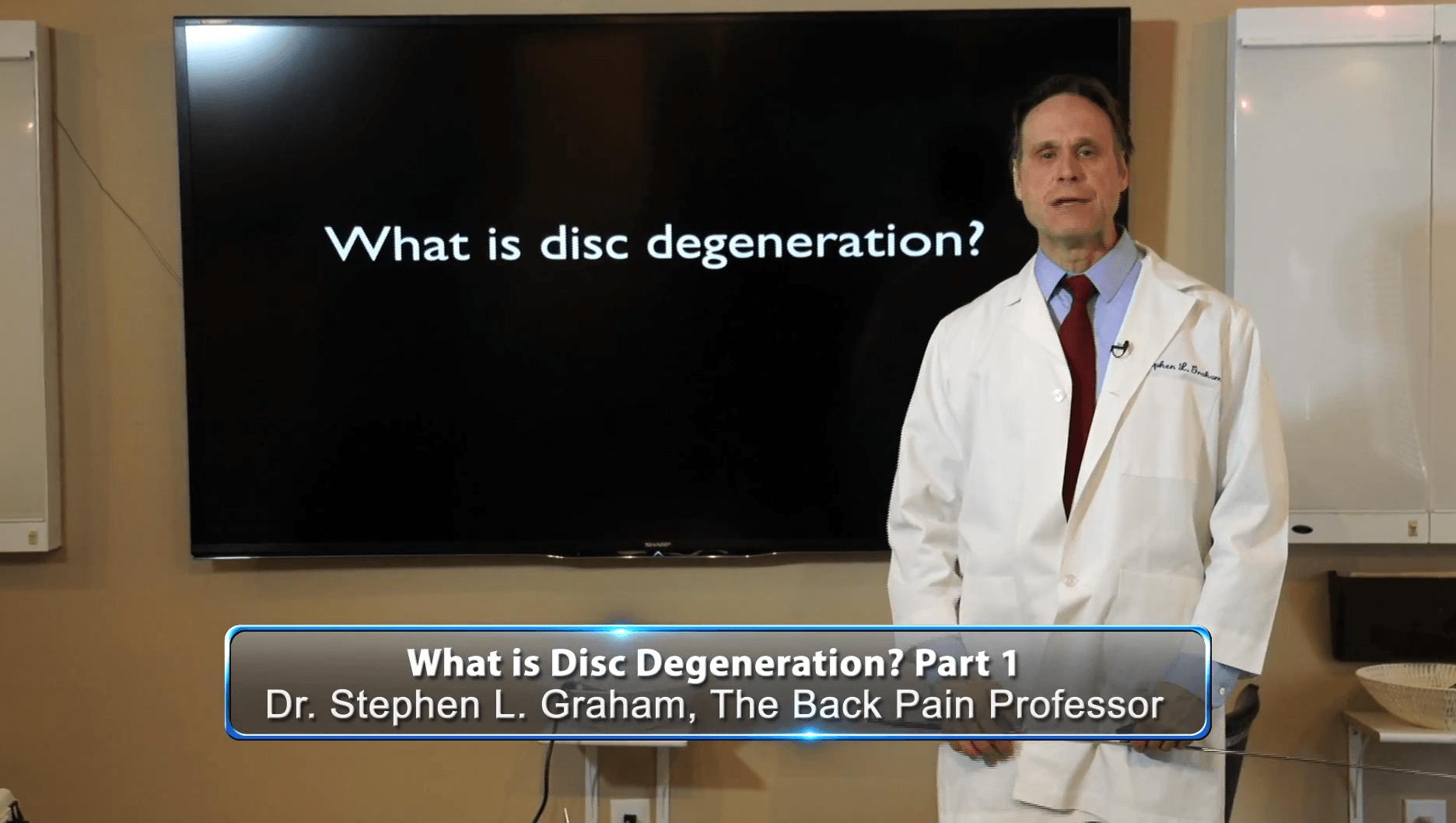
By Dr. Stephen Graham
•
13 Jan, 2014
In this video Dr. Stephen Graham explains the anatomy of the disc and how the disc degenerates. There are 23 discs in the spine and they act as shock absorbers for the spinal column. The disc is made up of a hard rubber like material with a jelly like material in the middle. Dr. Graham points out that you may get a good visual if you think about a jelly donut. Up to the age of 10, the discs get an automatic blood supply. This blood flow is where the discs get its nutrients from. In fact, 80% of the disc is made up of water. After the age of 10 the disc receives it’s nutrition from movement of the spinal bones. This movement , i.e., bending and twisting, pumps the blood through the disc. As long as there is a good supply of nutrition to the disc it could last 100 years. This continual hydration keeps the outer covering healthy. This is beneficial, Dr. Graham states, because when the outer covering is healthy it will contain the jelly (which is always trying to escape) in the middle. When the jelly stays in the middle people will not lose their height and they will increase their chances of escaping back pain. The disc serves a few functions. One function that was mentioned earlier is that the intervertebral disc acts like a shock absorber. If the disc was not present we would have no cushion and we would be bone on bone. We would not be able to bend and twist because the spine would be more like one long bone instead of 24 moveable bones. Another function of the disc is to act like spacer for the nerve to flow through. When the disc thins or degenerates the hole gets too small and pinches the contents traveling through the hole gets impinged on. This may cause low back pain, leg pain, numbness and tingling. When the spine misaligns it may jam up the spinal bones and this may cause the blood to not flow through at an optimal level and this lack of nutrition will cause the disc to dry out (disc dessication). Another cause of spinal degeneration is age. There are a great number of patients that because of age the nutrition slows down. Dr. Graham reports that at least half of his patients over 60 have spinal degeneration. On plain x-ray film a normal disc will look thick while a degenerated disc will look thin. In the beginnings of disc degeneration (disc dessication) the disc on plain film will look normal. On MRI a healthy disc will have a white signal while a degenerated disc will look black when there is disc dessication or spinal degeneration.
Useful Links
Office Location
Hours
| Monday | 5:00A - 11:00A |
|---|---|
| Tuesday | 5:00A - 11:00A |
| Wednesday | 5:00A - 11:00A |
| Thursday | 5:00A - 11:00A |
© 2024
All Rights Reserved | Graham Chiropractic
